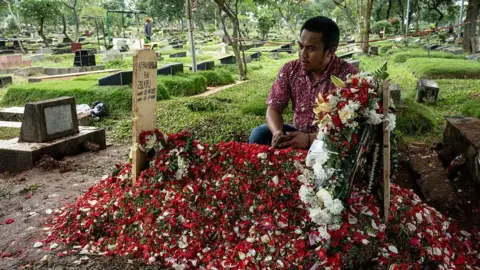Yuri Grigorovich, who reshaped the landscape of ballet in late-Soviet Russia, died on Monday at the age of 98, as confirmed by the Bolshoi Theater in Moscow. As the artistic director of the Bolshoi Ballet from 1964 until 1995, he is celebrated as one of the foremost choreographers of the 20th century.
Best known for his iconic 1968 production of "Spartacus," Grigorovich's work was described by New York Times critic Clive Barnes as a transformative moment in Soviet ballet. The performance narrates the tale of Spartacus, a gladiator who led a rebellion against oppressive forces in ancient Rome, reflecting themes that resonated with the Russian Revolution of 1917.
Unlike previous Soviet ballet productions, Grigorovich's "Spartacus," with music by Aram Khachaturian, was characterized by a more direct storytelling approach. It featured heroic characters like Spartacus and his wife against the forces of villainy embodied by Crassus and his mistress. The choreography was notable for its grandeur and emotional depth, showcasing powerful ensemble performances with dancers executing dynamic leaps, powerful kicks, and dramatic solos that captivated audiences.
Grigorovich’s legacy, especially through "Spartacus," not only defined a generation but also invigorated the global perception of Soviet ballet, marking his imprint on a pivotal cultural heritage that continues to inspire choreographers and dancers worldwide.
Best known for his iconic 1968 production of "Spartacus," Grigorovich's work was described by New York Times critic Clive Barnes as a transformative moment in Soviet ballet. The performance narrates the tale of Spartacus, a gladiator who led a rebellion against oppressive forces in ancient Rome, reflecting themes that resonated with the Russian Revolution of 1917.
Unlike previous Soviet ballet productions, Grigorovich's "Spartacus," with music by Aram Khachaturian, was characterized by a more direct storytelling approach. It featured heroic characters like Spartacus and his wife against the forces of villainy embodied by Crassus and his mistress. The choreography was notable for its grandeur and emotional depth, showcasing powerful ensemble performances with dancers executing dynamic leaps, powerful kicks, and dramatic solos that captivated audiences.
Grigorovich’s legacy, especially through "Spartacus," not only defined a generation but also invigorated the global perception of Soviet ballet, marking his imprint on a pivotal cultural heritage that continues to inspire choreographers and dancers worldwide.






















